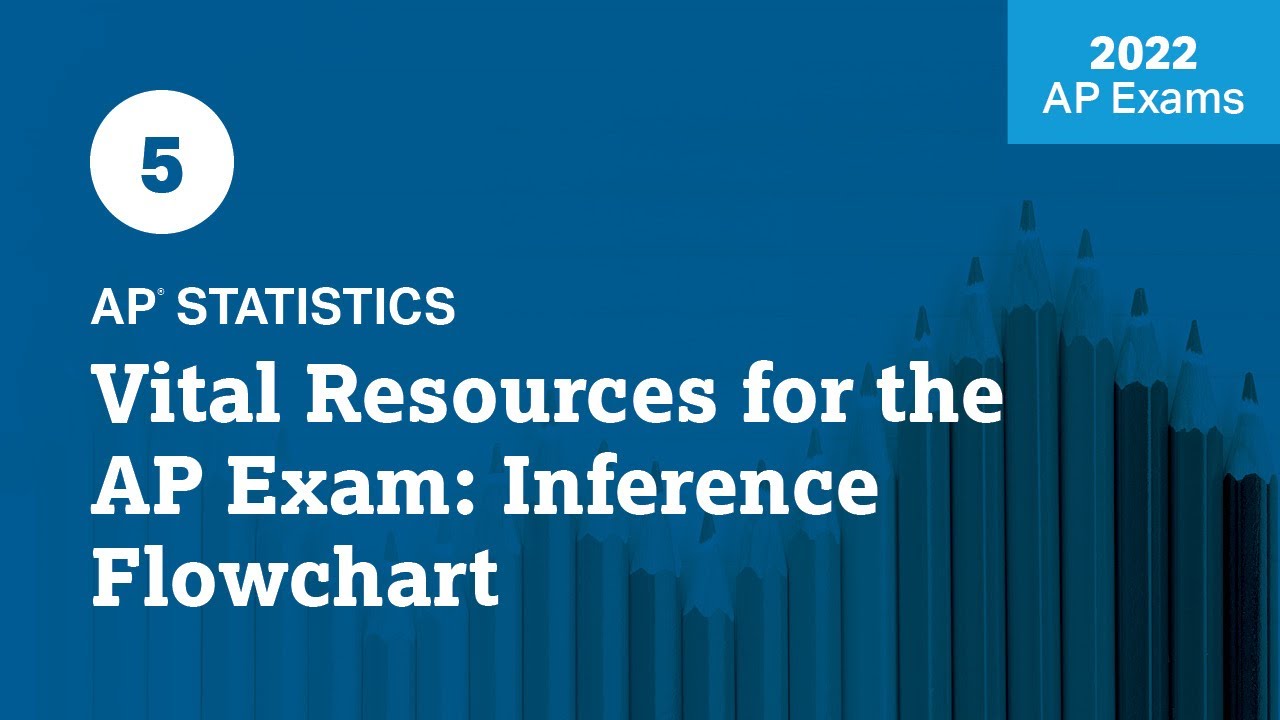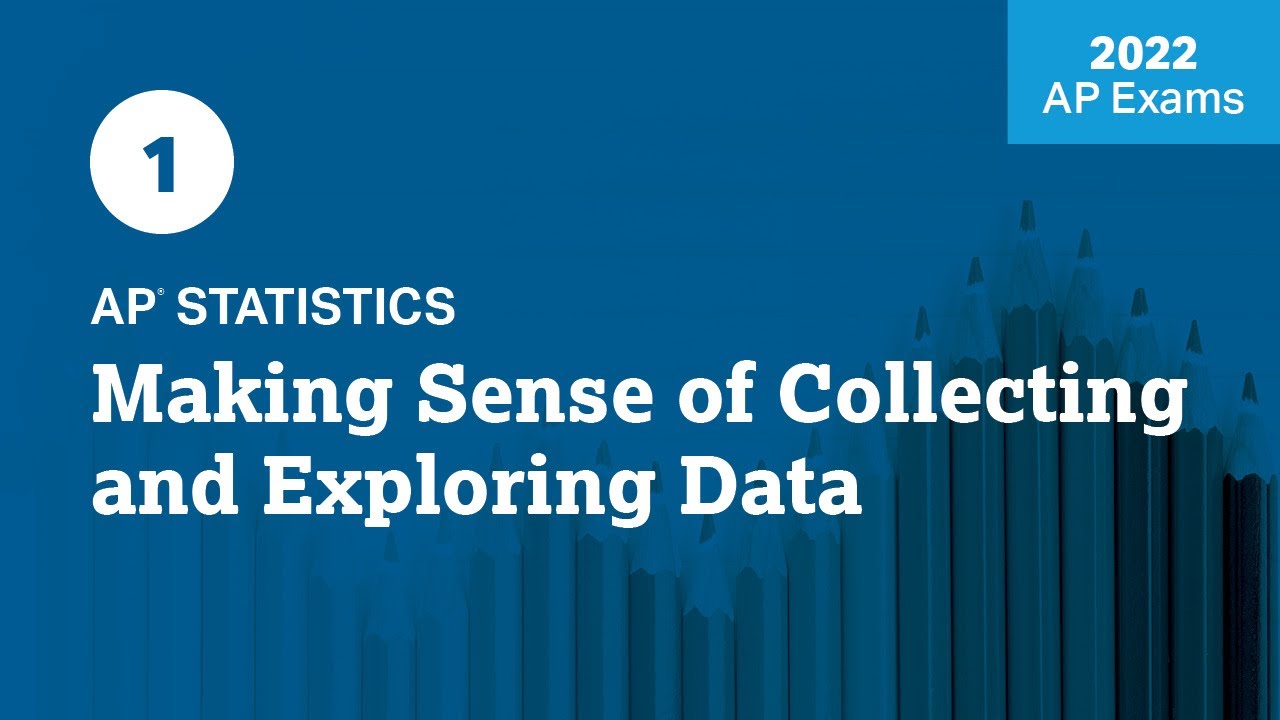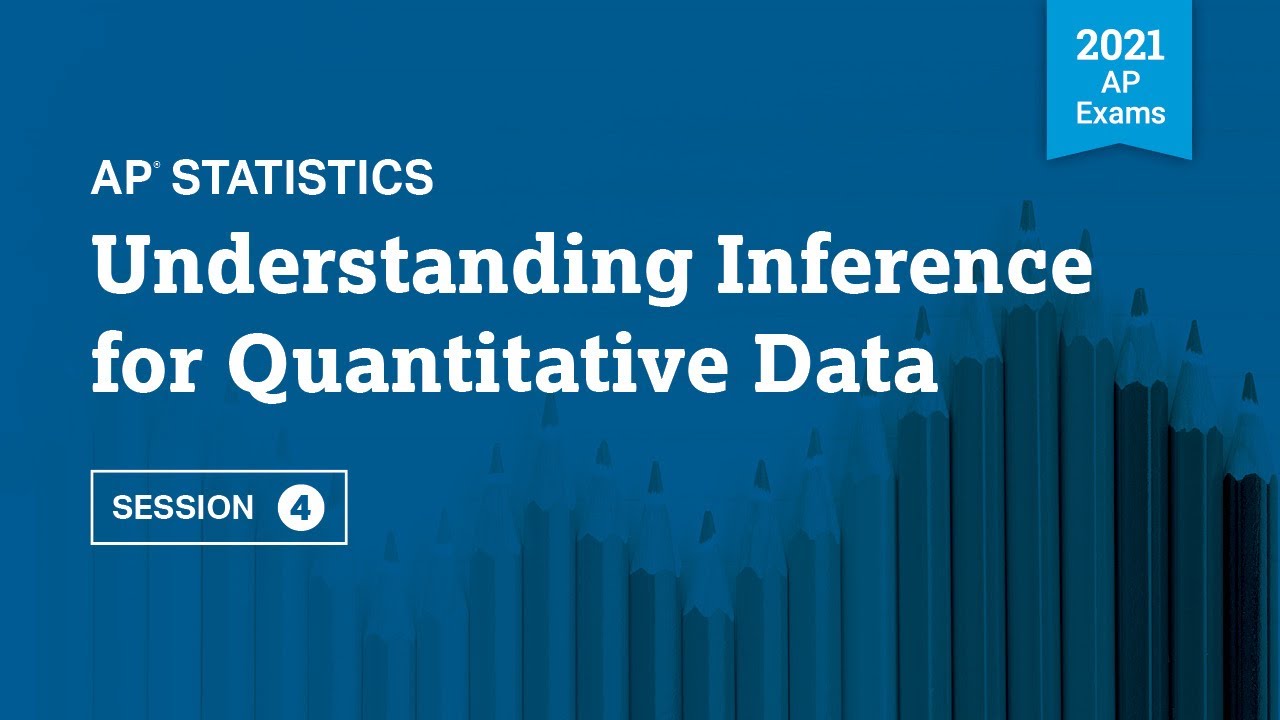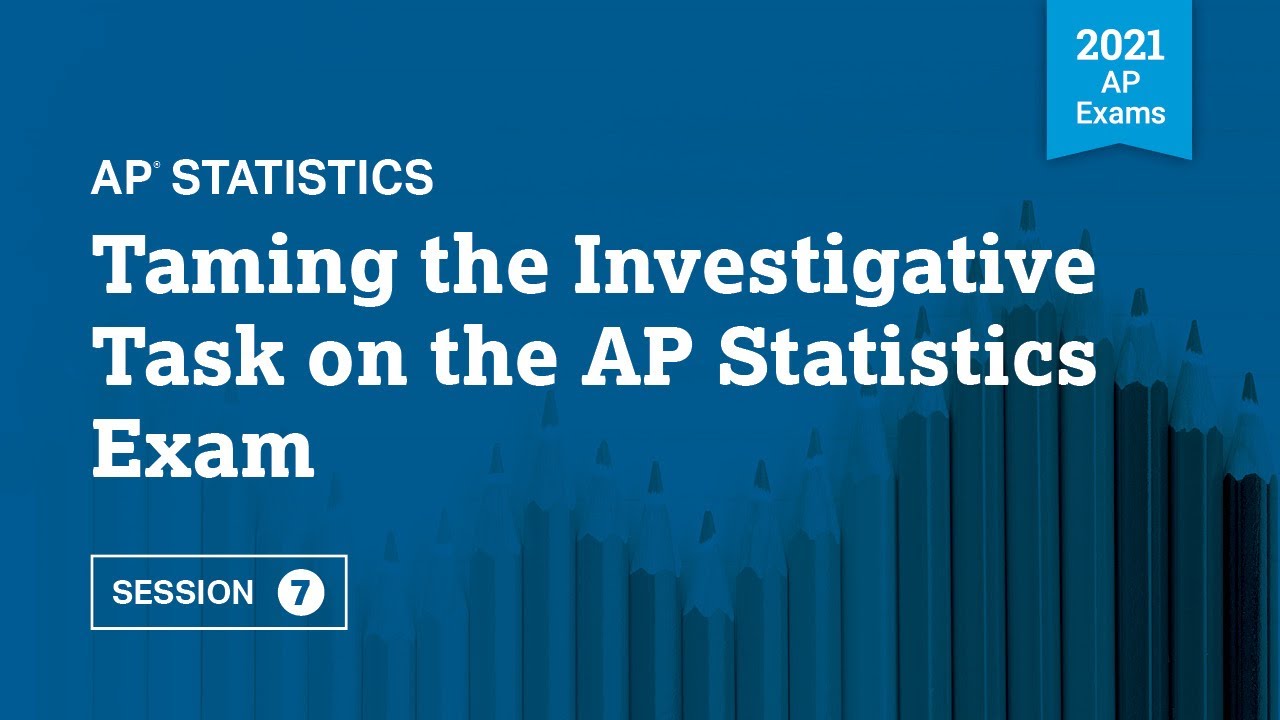2022 Live Review 7 | AP Statistics | Tackling the AP Statistics Investigative Task
TLDRIn this AP Statistics review session, instructor Darren Starns guides students through tackling investigative tasks, a critical component of the AP exam. He shares strategies for success, such as starting with known concepts and being prepared for unexpected twists. The session covers analyzing box plots, comparing distributions, and interpreting scatter plots to identify trends and relationships. Starns also discusses the importance of managing time effectively and provides a step-by-step walkthrough of a significance test for two proportions, including calculating p-values and understanding type 1 and type 2 errors. The session aims to build students' confidence and maximize their exam scores.
Takeaways
- 📚 The session focuses on tackling the AP Statistics Investigative Task, emphasizing the importance of applying skills and content in new contexts.
- 📈 The Investigative Task assesses multiple skill categories and content areas, requiring students to think outside the box as they will not encounter questions they've seen before.
- ⏰ Students are given approximately 25 minutes to complete the Investigative Task, which accounts for 12.5% of the entire exam score.
- 💡 The session provides specific strategies for success, including starting with what is known, preparing for unexpected twists, and managing time wisely.
- 📝 The handout for session seven includes questions that will be addressed during the session, along with hyperlinks to the inference flowchart and formula sheet.
- 📉 The first Investigative Task example involves analyzing baseball game attendance data, requiring students to compare distributions and trends over time.
- 📊 Describing relationships in scatter plots involves noting direction, form, strength, unusual features, and context, with the potential for deeper analysis of linearity and strength of relationship.
- 🤔 The concept of confounding variables is explored, requiring students to consider how one variable could affect the relationship between average attendance and other variables.
- 🧪 The second Investigative Task involves a drug study comparing the effectiveness of a new pain reliever formulation, highlighting the process of hypothesis testing and significance levels.
- 🔢 The use of a TI-84 calculator simplifies the process of performing calculations for hypothesis testing, providing an alternative to manual calculations using the formula sheet.
- 🛑 Errors in hypothesis testing are discussed, with the potential consequences of Type I and Type II errors explained in the context of the drug study.
Q & A
What is the main focus of session seven of AP Daily Live Review?
-The main focus of session seven is about tackling the AP Statistics investigative task, providing strategies for success and building confidence to maximize exam scores.
Who is the presenter of session seven of AP Daily Live Review?
-Darren Starns, a long-time AP Statistics teacher and AP exam reader, is the presenter of session seven.
What materials are recommended to have during session seven?
-It is recommended to have the handout for session seven, the formula sheet, and the inference flow chart that were discussed in session five.
How long does the AP Statistics investigative task take to complete on the exam?
-The investigative task should take about 25 minutes to complete as it is the last question in the free response section.
What percentage of the total exam score does the investigative task contribute?
-The investigative task contributes 12.5 percent of the entire exam score.
What are the five elements included in comparing distributions of quantitative data as discussed in the session?
-The five elements are shape, unusual features, center, variability, and context.
What is a confounding variable and why is it important in the context of the baseball team's attendance data?
-A confounding variable is a variable that could be the cause of the association between attendance and other variables, such as the number of games won, rather than the new stadium itself. It's important to identify to avoid incorrect conclusions about the effects of the new stadium on attendance.
What is the significance of the p-value in the context of the drug company's study on stomach irritation?
-The p-value determines whether there is enough statistical evidence to reject the null hypothesis that the new formulation does not reduce stomach irritation compared to the current pain reliever.
What is the difference between type 1 and type 2 errors in the context of the drug study?
-Type 1 error is rejecting the null hypothesis when it is true (marketing a new drug that does not actually reduce stomach irritation). Type 2 error is failing to reject the null hypothesis when it is false (not recognizing the new drug's reduced stomach irritation effects).
How is the power of a statistical test estimated in the session?
-The power of a test is estimated through a simulation study, where the researcher assumes true proportions for the outcomes and calculates the proportion of trials that result in rejecting the null hypothesis at a given significance level.
What are the five strategies discussed in the session to tackle the AP Statistics investigative task effectively?
-The five strategies are: 1) Start with what you know, 2) Be prepared for unexpected twists, 3) If stuck, make up an answer and use it for subsequent parts, 4) Be ready to summarize understanding at the end of the task, and 5) Manage time wisely.
Outlines
📚 Session Introduction and Materials Overview
The session begins with an introduction by the instructor, Darren Starns, who welcomes AP Statistics students to the seventh live review session. He is located in Hilton Head, South Carolina, and has extensive experience as a teacher and exam reader for AP Statistics. The focus of this session is to address the AP Statistics investigative task. Students are advised to have specific materials ready, including a handout, formula sheet, and inference flowchart, all accessible through a provided URL. The handout is detailed, with hyperlinks to essential resources and questions that will be discussed during the session. The instructor emphasizes the importance of these materials and suggests that students download them if they haven't already. The session's goals are outlined: to review essential content and skills, share strategies for tackling the investigative task, and build students' confidence to maximize their exam scores.
🧐 Strategies for Tackling the Investigative Task
The instructor discusses strategies for approaching the AP Statistics investigative task, which is known for its complexity and the requirement to apply skills in new contexts. The strategies include starting with familiar concepts, being prepared for unexpected twists, making up answers if stuck, summarizing understanding at various points, and managing time wisely. The session will involve working through two investigative tasks from past exams to illustrate these strategies. The tasks are designed to assess multiple skill categories and content areas, emphasizing application in non-routine ways. The instructor highlights the importance of not scoring zero on this task due to time management or lack of progress.
📊 Analyzing Baseball Attendance Data
The first investigative task involves analyzing box plots and scatter plots of baseball game attendance data, comparing distributions and trends between an old and a new stadium. The task requires students to describe the shape, center, variability, and any unusual features of the distributions, as well as to compare trends over time. The instructor demonstrates how to apply the strategies discussed earlier, emphasizing the importance of starting with what is known and being prepared for the unexpected. The analysis includes interpreting box plots for distribution characteristics and scatter plots for trends, with a focus on the application of statistical concepts to real-world data.
📈 Describing Relationships and Identifying Confounding Variables
The session continues with a deeper analysis of the baseball attendance data, focusing on the relationship between average attendance and the number of games won. The instructor guides students through describing the relationship using scatter plots and then introduces the concept of confounding variables. A confounding variable could be a third variable that affects the relationship between the two variables of interest. The task requires students to explain how one of the variables—number of games won—could be a confounding variable in the relationship between average attendance and other variables, such as the year or stadium. The instructor provides a detailed explanation and demonstrates how to connect graphical evidence to the concept of confounding.
🛑 Investigating a Pain Reliever's Effectiveness
The second investigative task shifts to a different context, examining the effectiveness of a new pain reliever formulation in reducing stomach irritation. The task involves a preliminary study with a randomized experiment and a significance test for comparing two proportions. The instructor outlines the steps for conducting the test, including stating hypotheses, identifying the procedure, performing calculations, and making a conclusion in context. The focus is on the correct application of inferential statistics to determine if there is evidence that the new formulation reduces stomach irritation at a 10% significance level.
🔍 Calculating and Interpreting Test Results
The instructor provides a detailed walkthrough of performing the two-sample z-test for the pain reliever study, including the calculation of the test statistic and p-value. Two methods are demonstrated: using the formula sheet and using a graphing calculator. The results indicate whether there is sufficient evidence to support the claim that the new formulation reduces stomach irritation. The session emphasizes the importance of correctly interpreting the p-value in the context of the study and making an informed conclusion based on the data.
🤔 Considering Errors and Statistical Power
Following the significance test, the session explores the potential for Type I and Type II errors in the context of the study. The instructor explains the consequences of each error type and their implications for the drug company. Additionally, a simulation study is introduced to estimate the power of the test with an increased sample size. The histogram of p-values from the simulation is used to estimate the test's power, providing insight into the likelihood of correctly rejecting the null hypothesis under the assumed conditions.
📊 Estimating and Interpreting Test Power
The session concludes with an interpretation of the estimated test power obtained from the simulation study. The value represents the probability of correctly rejecting the null hypothesis when the alternative is true, given the assumptions about the true proportions of stomach irritation for the two medications. The instructor emphasizes the importance of understanding what the power estimate signifies in the context of the study and how it relates to the research question and the potential impact on the drug's marketing and patient treatment.
🗣️ Session Recap and Final Thoughts
In the final part of the session, the instructor recaps the key content and skills addressed, including comparing distributions, describing relationships, identifying confounding variables, performing significance tests, and estimating test power. The strategies discussed earlier in the session are reiterated, with an emphasis on starting with known concepts, preparing for unexpected twists, making up answers if necessary, summarizing, and managing time effectively. The instructor thanks the students for their participation and encourages them to attend the final session for additional strategies and tips. The session aims to build students' confidence and equip them with the skills to tackle investigative tasks effectively on the AP exam.
Mindmap
Keywords
💡AP Statistics
💡Investigative Task
💡Handout
💡Graphing Calculator
💡Confounding Variable
💡Scatter Plot
💡Box Plot
💡Significance Level
💡Type 1 and Type 2 Errors
💡Power of a Test
Highlights
Introduction to AP Daily Session 7 focusing on the AP Statistics Investigative Task.
Importance of having the handout, formula sheet, and inference flowchart for the session.
Strategies for tackling the AP Statistics Investigative Task, including starting with what you know and being prepared for unexpected twists.
The investigative task assesses multiple skill categories and content areas, requiring application in new contexts.
Time management is crucial, with 25 minutes dedicated to the investigative task in the exam.
The investigative task accounts for 12.5% of the entire exam score, emphasizing its significance.
Approach to managing time during the exam, including when to start the investigative task.
Detailed walk-through of an example investigative task from the 2021 AP Statistics exam about baseball attendance.
Description of comparing distributions of quantitative data using box plots for the baseball example.
Analysis of trends in average attendance over time between old and new stadiums using scatter plots.
Investigating the relationship between average attendance and the number of games won.
Identifying a confounding variable in the relationship between average attendance and other variables.
Second example investigative task involving a drug company's study on a new pain reliever formulation.
Conducting a significance test to compare the proportions of patients with stomach irritation between two drug formulations.
Explaining the potential consequences of Type I and Type II errors in the context of the drug study.
Estimation of the test's power through a simulation study, assuming specific true proportions for stomach irritation.
Interpretation of the estimated power value in the context of the drug study, representing the probability of correctly rejecting the null hypothesis.
Summary of strategies and content covered in the session, emphasizing the importance of managing time and starting with known concepts.
Encouragement to review previous AP Daily videos and AP Central resources for additional practice on investigative tasks.
Transcripts
Browse More Related Video

2022 Live Review 5 | AP Statistics | Vital Resources for the AP Exam: Inference Flowchart

2021 Live Review 6 | AP Statistics | Rubrics for Free-Response Success on the AP Statistics Exam

2022 Live Review 1 | AP Statistics | Making Sense of Collecting and Exploring Data

2021 Live Review 4 | AP Statistics | Understanding Inference for Quantitative Data

2021 Live Review 7 | AP Statistics | Taming the Investigative Task on the AP Statistics Exam

2021 Live Review 1 | AP Statistics | How to Explore and Collect Data
5.0 / 5 (0 votes)
Thanks for rating: